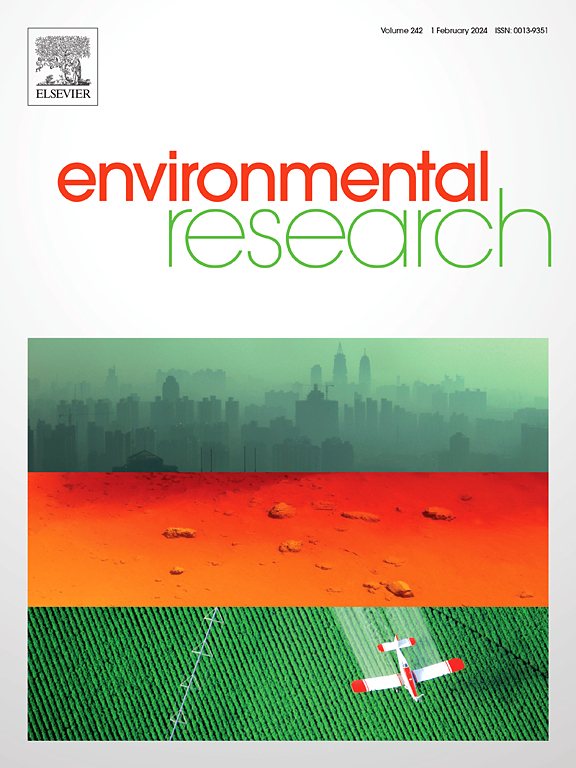Performance and mechanism of nano Fe-Al bimetallic oxide enhanced constructed wetlands for the treatment of Cr(VI)-contaminated wastewater
IF 7.7
2区 环境科学与生态学
Q1 ENVIRONMENTAL SCIENCES
引用次数: 0
Abstract
Enhancing the synergistic interactions between substrates and microorganisms in constructed wetlands (CWs) represents a promising approach for treating heavy metal-contaminated wastewater. Multifunctional nanomaterials may play a significant role in this process. However, their impacts and mechanisms in this context remain unclear. In this study, artificial zeolite spheres loaded with Fe-Al double metal oxide (Fe-Al-NBMO) were synthesized and utilized in the CW to treat Cr(VI)-contaminated wastewater. Adsorption experiments demonstrated that the adsorption capacity of Fe-Al-NBMO loaded substrate for Cr(VI) was 988.43 mg/kg at an initial concentration of 30 mg/L, 361, and 37 times higher than that of gravel and carrier, respectively. The CW experiment indicated that the Cr(VI) effluent concentration in CW-ZL with Fe-Al-NBMO substrate did not exceed the integrated wastewater discharge standard (GB8978-1996) (0.5 mg/L) at an influent concentration of 50 mg/L. The introduction of the Fe-Al-NBMO substrate promoted microbial growth and increase the Extracellular Polymeric Substances (EPS) and other metabolite contents, thereby enhancing the microbial adsorption of Cr(VI). Furthermore, the removal performance of Cr(VI) was enhanced by the increase in resistant microorganisms (Hyphomicrobium and Rhodopseudomonas) and functional genes. Notably, metaproteomic analysis revealed that the elevated abundance of NADH-quinone oxidoreductase (nuoB, nuoC, nuoD, nuoE, nuoF, and nuoG), reductive coenzymes (fbp, ALDO, mcrA, and cdhC), metabolic pathways of sulfur (Cysp), and glutathione transferase (GsiB, frmA, and gfa) contributed to Cr(VI) removal. Our results provide a robust strategy for treating Cr(VI)-contaminated wastewater by CWs with Fe-Al-NBMO loaded substrate.

求助全文
约1分钟内获得全文
求助全文
来源期刊

Environmental Research
环境科学-公共卫生、环境卫生与职业卫生
CiteScore
12.60
自引率
8.40%
发文量
2480
审稿时长
4.7 months
期刊介绍:
The Environmental Research journal presents a broad range of interdisciplinary research, focused on addressing worldwide environmental concerns and featuring innovative findings. Our publication strives to explore relevant anthropogenic issues across various environmental sectors, showcasing practical applications in real-life settings.
 求助内容:
求助内容: 应助结果提醒方式:
应助结果提醒方式:


